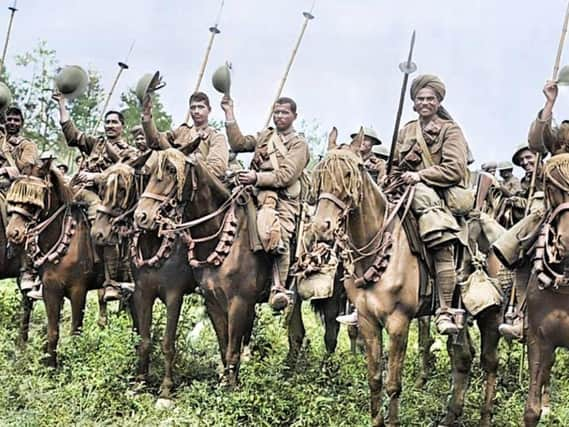How soldiers swapped the army drill for shifts in the Heavy Woollen District's mills


The royal couple’s tour in summer 1961 was to have a lasting long-term economic impact on the Heavy Woollen District”s five textile mill towns of Dewsbury, Batley, Heckmondwike, Cleckheaton and Huddersfield.
The Reporter series will be publishing a series of anniversary features over the next few weeks to explain in more detail what happened across our region in the coming years after that royal visit.
Advertisement
Hide AdAdvertisement
Hide AdThe features will also be a tribute to a forgotten generation of Indian and Pakistani migrant workers who first came to settle in our local area during those early post-war years.
Our first feature is an interview given by Britain’s distinguished senior Muslim Scholar, Professor Shahid Raza Naeemi OBE, on the British-Indian Army’s role during the First World War.
He explained: “The origins of post-war Indian and Pakistani immigration into the Heavy Woollen District can be traced back over a century ago (and almost fifty years before the Queen’s 1961 visit to the Sub-Continent).
“Britain, during the early twentieth century, still ruled a huge area of territory known then as British-India. Yet, there were no mills in India to provide work for the Indian people.
Advertisement
Hide AdAdvertisement
Hide Ad“The army was the only source of employment across the Sub-Continent for most young Indian men.
“But it was not long before a section of India’s population got an opportunity to serve overseas under the British.
“Over 400,000 men from the Sub-Continent joined the British-Indian Army at the outbreak of the First World War in August 1914.
“The majority of these recruits were Sikh and Muslim soldiers whose families lived in the rural villages of Punjab, Kashmir, and in the North-West Frontier Province.
Advertisement
Hide AdAdvertisement
Hide Ad“At least 67 per cent of the soldiers recruited into the British-Indian Army were Muslim. These brave men were in the middle of some intense fierce fighting seen on the Western Front in France and in Belgium during the early stages of the war.
“Another massive 700,000 men volunteered to join the British-Indian Army in the year 1916, after conscription had been introduced in Britain for the first time by David Lloyd George’s wartime coalition government.
“The total number of soldiers from British-India stood at over one million halfway through the war. As a result, the British-Indian Army became the largest volunteer force ever to be recruited in British military history.
“Such huge numbers had created big regiments which were shipped over to Europe.
Advertisement
Hide AdAdvertisement
Hide Ad“Soldiers from the British-Indian Army were at Gallipoli. They were also ordered to take part in the Battle of The Somme in July 1916.
“The Somme campaigns were a huge offensive launched by the Allies in an attempt to break the deadlock of trench warfare in France.
“Besides fighting in Europe, contingents from the British-Indian Army also fought against Kaiser Wilhelm’s forces in German East Africa.
“A total of 17 Victoria Crosses were awarded to soldiers from the British-Indian Army for showing utmost gallantry and bravery.
Advertisement
Hide AdAdvertisement
Hide Ad“The First World War finally ended in November 1918. At least 74,000 British-Indian Army soldiers had died fighting for ‘King and Country’.
“Another 62,000 were severely wounded. The conflict came to be known in Indian Urdu culture as the ‘Jhang-E-Azeem’ - meaning the ‘Great War’.
“The Great War was over. Yet, the massive ‘Asian contribution’ during those four years of the ‘Jhang-E-Azeem’ was to be remembered for a long time by the British establishment.
“The foundations for people to come over to the Heavy Woollen District from the Indian Sub-Continent had already been laid during the First World War.
“The Queen’s state visit in 1961 was to make these foundations even stronger.”